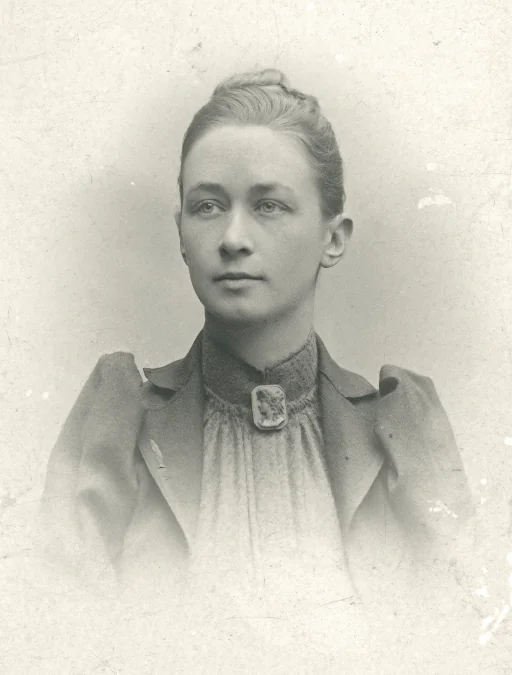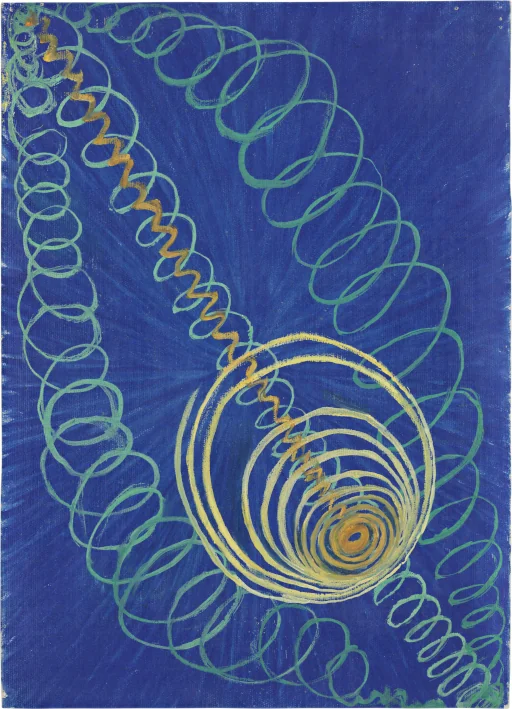Art institutions significantly shape the narratives and value of art history, often creating a one-sided representation. This power can lead to delayed recognition and cultural homogenization, as seen in the case of Abstract Expressionist Hilma af Klint.

Hilma af Klint, a Swedish artist and mystic, created some of the earliest known abstract works in Western art. Her extensive oeuvre predates key abstract pieces by Kandinsky, Malevich, and Mondrian. A member of “The Five,” a group influenced by Theosophy, she aimed to connect with “High Masters” through séances. Her works, often diagram-like, visually expressed intricate spiritual concepts.
A real-life example of how institutions influence art historical significance is the rediscovery and revaluation of the Abstract Expressionist painter Hilma af Klint. Long overlooked, af Klint’s work predates the first purely abstract compositions by Kandinsky, yet she was virtually unknown outside of her native Sweden for many years.

1896, Hilma af Klint, through her work with The Five, pioneered experimental automatic drawing. This led to her development of a unique geometric visual language that conceptualized invisible forces of both inner and outer worlds. She delved into world religions, atomic theory, botany, and documented her discoveries extensively.
Her posthumous rediscovery was largely due to the efforts of major art institutions. In 1986, her work was included in an exhibition at Los Angeles County Museum of Art, which began to spark interest. However, it was the 2013 exhibition at the Moderna Museet in Stockholm and the subsequent 2018-2019 exhibition at the Guggenheim Museum in New York that truly established her significance in the history of modern art. These exhibitions positioned af Klint as a pioneering figure in abstract art, challenging the established narrative of the movement’s origins.
As a result of this institutional endorsement and exposure, Hilma af Klint’s works have gained significant recognition and value, altering the historical understanding of the development of abstract art. Her story exemplifies how art institutions have the power to shape art history and the legacy of artists through their curatorial choices.
Why This is Dangerous
The case of Hilma af Klint’s late recognition raises concerns about the one-sided nature of art historical significance as shaped by institutions:
- Delayed Recognition: Af Klint’s work remained unrecognized for decades, demonstrating how institutional biases or oversights can delay or deny recognition to deserving artists. This suggests a limitation in how art history is curated and presented, often favoring certain narratives over others.
- Narrative Control: Institutions hold significant power in shaping art history narratives. This can lead to a skewed representation, where certain styles, regions, or periods are overemphasized while others are marginalized. The late acknowledgment of af Klint suggests that many other artists and movements might remain underrepresented or misunderstood.
- Market Influence: The art market can be heavily influenced by institutional endorsements. This can create disparities in the value and visibility of artists’ work based on institutional preferences rather than artistic merit alone.
- Cultural Homogenization: A focus on a narrow set of narratives can lead to cultural homogenization in the art world. This undermines the diversity of artistic expression and the rich tapestry of global art contributions.
- Artist Opportunities: Artists not fitting into the ‘preferred’ narrative may struggle to find opportunities for exhibition and recognition, which can stifle their careers and creative expression.
So I say, while institutions play a crucial role in preserving and promoting art, their influence can also lead to a one-sided representation of art history, affecting both the recognition of artists and the understanding of art’s evolution. It underscores the need for a more inclusive and diverse approach to curating and valuing art.






